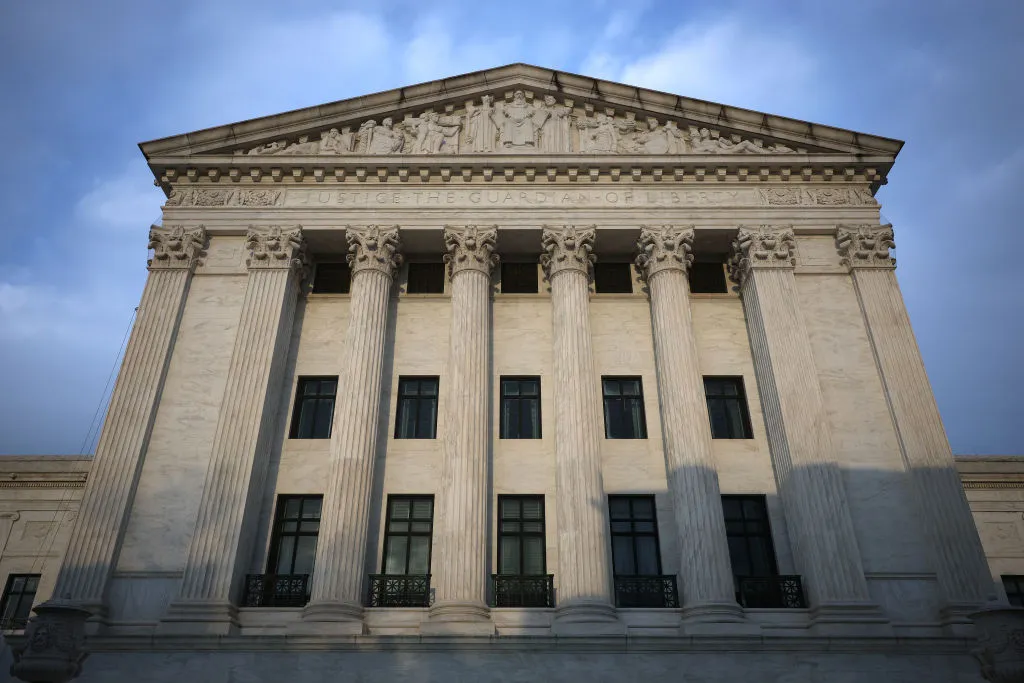What the Trump administration wants from the Supreme Court this term


Updated on Sept. 4 at 10:00 a.m.
Two months after winning a case on universal injunctions that stemmed from President Donald Trump’s executive order ending birthright citizenship, the Trump administration has signaled that it expects birthright citizenship to be back in front of the Supreme Court soon. Government lawyers recently pointed to a forthcoming cert petition on the issue to explain why they need more time to respond to a class-action suit contesting Trump’s executive order.
“There are multiple other lawsuits challenging the same Executive Order that is being challenged in this case. To that end, the Solicitor General of the United States plans to seek certiorari expeditiously to enable the Supreme Court to settle the lawfulness of the Executive Order next Term, but he has not yet determined which case or combination of cases to take to the Court,” read the Aug. 19 motion in front of a district court in Maryland.
Regardless of when that cert petition is filed, it won’t be the Trump administration’s first attempt to get an issue added to the merits docket for the 2025-26 term. Perhaps most prominently, the administration filed a cert petition on tariffs on Wednesday, asking the court to overturn a decision against Trump by the U.S. Court of Appeals for the Federal Circuit.
But that is not all. As detailed below, the Trump administration has also asked the justices to weigh in on the Second Amendment rights of habitual drug users as well as the rights of asylum seekers at the U.S.-Mexico border.
While neither of those requests is currently scheduled to be considered during the justices’ “long conference” on Sept. 29, by the end of October we will likely know whether the court will weigh in.
Controlled substances and the Second Amendment
One year after the Supreme Court ruled on the Second Amendment rights of individuals who are subject to domestic-violence restraining orders and three years after it emphasized the importance of tying such rulings to “history and tradition,” the Trump administration is asking the justices to again address the scope of the Second Amendment.
Through cert petitions in five separate cases involving guns and illegal drugs, federal officials have urged the court to decide whether “the federal statute that prohibits the possession of firearms by a person who ‘is an unlawful user of or addicted to any controlled substance[]’ violates the Second Amendment.” The law, which Hunter Biden was convicted under last year, leads to “hundreds of prosecutions every year,” according to the government, which contends that the statute is constitutional because it addresses a public safety threat in a “measured way.”
“By disqualifying only habitual users of illegal drugs from possessing firearms, the statute imposes a limited, inherently temporary restriction—one which the individual can remove at any time simply by ceasing his unlawful drug use,” U.S. Solicitor General D. John Sauer wrote in one of the cert petitions.
To be clear, the Trump administration does not want the justices to hear arguments in all five cases. Instead, it urged the court to take up United States v. Hemani, which the government described as the best case for determining if “there are compelling legal and historical reasons” to uphold the law preventing habitual drug users and addicts from owning guns.
In Hemani, the U.S. Court of Appeals for the 5th Circuit ruled that the government can only apply the law to drug users “who were actually impaired at the time of possessing the firearm.” That ruling, according to the cert petition, created uncertainty around similar state-level gun restrictions and deepened a division among the federal courts of appeals (something the Supreme Court often looks for when deciding whether to grant review), since the U.S. Court of Appeals for the 7th Circuit has upheld the statute and the U.S. Court of Appeals for the 8th Circuit has ruled that the government can only use it in a different set of circumstances – namely, when a defendant’s drug use has been shown to make them a public safety threat, among other considerations.
In addition to presenting Hemani as an opportunity to resolve the division among the courts of appeals and reduce confusion, the Trump administration also implied in its petition that taking up the case will allow the court to further clarify how to determine whether a modern restriction on gun possession is analogous to gun restrictions from the past. The justices discussed the importance of making such a determination in the 2022 case of New York State Rifle & Pistol Association v. Bruen, but lower courts have struggled to implement the guidance.
Sauer further argued that the administration’s support for the gun law is not at odds with its support for the Second Amendment. Habitual drug users “present unique dangers to society” when they carry guns, creating a circumstance in which the government can justifiably limit their Second Amendment rights until they stop using illegal drugs, he contended. And in the “marginal” cases in which a drug user would not be deemed to be a public safety threat, that person “may apply to the Attorney General for relief,” Sauer added.
Asylum applications
The second issue that the Trump administration would like to see added to the merits docket involves the process for making asylum claims at the U.S.-Mexico border. Specifically, in Noem v. Al Otro Lado, the government is asking the justices to determine at what point someone seeking protection from violence or discrimination in their home country “arrives in the United States” and is thus entitled to the opportunity to meet with an immigration officer and formally apply for asylum under the Immigration and Nationality Act.
According to administration officials, the answer is simple: You arrive in the United States when you physically cross the U.S.-Mexico border from Mexico into the United States. That’s why multiple presidents, including Barack Obama and Joe Biden, have addressed unmanageable surges in asylum applications by restricting border crossings.
While the first Trump administration formalized the process for limiting, or “metering,” how many asylum seekers entered the U.S. from Mexico each day and thereby sparked the ongoing lawsuit from Al Otro Lado, a humanitarian organization serving refugees and other migrants, the practice of metering actually began in 2016, according to the government’s cert petition. That’s when, in the face of overcrowding at ports of entry, the Obama administration instructed border officers to meet with asylum seekers in Mexico and prevent those without valid travel documents from crossing into the United States.
And although Biden-era officials abandoned the first Trump administration’s metering policies, they found other ways to reduce asylum claims, including by having asylum seekers register online for appointments with border officials while still in Mexico. Litigation in the Al Otro Lado case continued throughout Biden’s four years in office, and his administration argued that you don’t arrive in the United States until you physically cross the border, just as the Trump administration is arguing now.
The U.S. Court of Appeals for the 9th Circuit rejected that argument in siding with Al Otro Lado and asylum seekers who challenged policies aimed at reducing border crossings. It held that asylum seekers “arrive[] in the United States” when they present themselves “to an official at the border,” even if that meeting takes place in Mexico.
Sauer contended in the cert petition, which was filed on July 1, that the 9th Circuit’s ruling threatens “the Executive Branch’s ability to manage the southern border” and disrupts the entire immigration system. “Before this litigation, border officials had repeatedly addressed migrant surges by standing at the border and preventing aliens without valid travel documents from entering. The decision below declares that practice unlawful,” he wrote.
Initially, Al Otro Lado and the asylum seekers involved in the case waived their right to file a response to the government’s cert petition. But on Aug. 7, the court called for a response, which means that at least one justice is interested in seeing their arguments before the court considers the petition. Al Otro Lado’s response is due on Oct. 8.
Other cases
The Trump administration is also involved in more than four dozen other cert petitions as the respondent, or the party defending the decision below. These include battles over tax laws, telemarketing restrictions, and deportation proceedings. Officials have waived their right to respond to around one-third of these petitions, signaling that they don’t see them as worthy of serious consideration.
In most of these cases, the Trump administration is defending the actions of a different administration or longstanding federal policies. However, several challenges to Trump’s policy moves could make it to the merits docket soon, including his executive order on birthright citizenship, as noted above, and his removal, without cause, of several leaders of independent agencies.
In other words, it’s shaping up to be a busy term for Trump administration attorneys and a consequential one for the country. And this doesn’t even include applications on the emergency docket, which the administration has regularly – and successfully – used over the past seven months to undo its losses in lower courts.
Posted in Court Analysis, Potential Merits Cases
Cases: Learning Resources, Inc. v. Trump (Tariffs), Noem v. Al Otro Lado